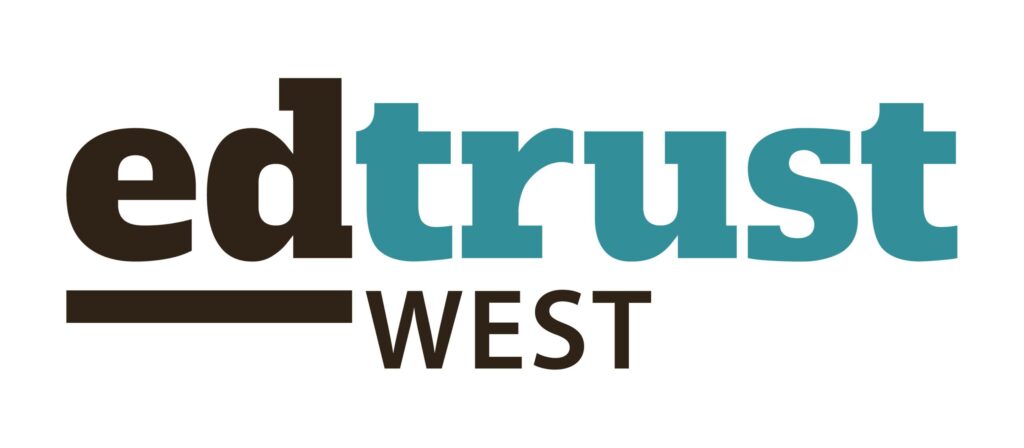OAKLAND, CA (February 23, 2012) – A new report released today paints a step-by-step picture of startling inequities in California’s system of education funding that harm our state’s poorest school districts. In The Cruel Divide: How California’s Education Finance System Shortchanges its Poorest School Districts, The EdTrust—West reveals that California’s highest poverty districts—those with the largest concentrations of low-income students—receive $620 less per student from state and local sources than the state’s wealthiest districts. For a mid-sized school district of 6,000 students, that amounts to over $3.7 million per year.
“Students with the greatest needs should receive additional funding to accelerate their learning, close achievement gaps and help them catch up with their better off peers,” said Arun Ramanathan, Executive Director of The EdTrust—West, a statewide education advocacy organization that works to close the gaps in opportunity and achievement for students of color and students in poverty. “This report reveals that California’s education funding system is shortchanging our highest need districts and schools and giving less to those students who desperately need more.”
The report traces the funding gap to the three primary sources of state funding: revenue limits, categorical funding, and locally-generated revenue (such as parcel taxes and parent contributions).
Revenue limit funding is general purpose funding used by districts to cover the basic cost of an education. Although it is designed to equalize funding between districts, the overall revenue limit gap between the highest and lowest poverty districts is $874 per student. This gap can be found in all types of districts but is greatest among high school districts, where it amounts to $1,344. In short, where a family lives can make a huge difference. For example, in San Diego County, the wealthy Solana Beach Elementary School District had total revenue limit funding of $10,613 per student compared with the nearby National Elementary School District, which had revenue limit funding of $5,607 per student.
The report also finds that poor districts are often shortchanged when it comes to the allocation of categorical funds targeted by state lawmakers for high-need student populations. Wealthier districts actually receive $139 more per pupil of Economic Impact Aid (EIA) than the state’s poorest school districts, even though EIA is one of the state’s primary sources of funding for poor and English-learner students.
To top it off, local revenues such as parcel taxes and local parent contributions generated by districts worsen existing inequities. Most parcel taxes have passed in wealthy districts that have far more ability to raise large amounts of extra funding for their schools. Overall, the state’s wealthiest districts are able to raise $570 more in local funds per student than the poorest districts. In elementary districts, that gap climbs to almost $800 per student.
The report praises recent calls by Governor Jerry Brown to reform California’s education finance system and fund students based on need. However, it recommends that the Governor and state policymakers also:
- Simplify the school finance system so that policymakers, educators, parents, and local taxpayers can understand where money comes from and how it is spent.
- Provide additional dollars to high-need students through a student-based funding model such as a weighted student formula that sends education dollars to the school-level.
- Monitor and prevent gaps in local revenue, such as parcel taxes, from arising between high and low-poverty communities.
“After decades of trying to reform our school finance system, the fact remains that the poorest school districts in California still receive less funding,” said Ramanathan. “Governor Brown has rightly called for shifting to a funding system based on student need. He must also commit to making the system transparent and ensuring that the vast majority of education funding flows directly to our highest-need students and schools.”
***ETW has put together a web tool that allows you to search for a school district’s per-pupil state and local revenues. Click here to access the tool.***
# # #
About The EdTrust—West
The EdTrust—West works for the high academic achievement of all students at all levels, pre-k through college. We expose opportunity and achievement gaps that separate students of color and low-income students from other youth, and we identify and advocate for the strategies that will forever close those gaps.

